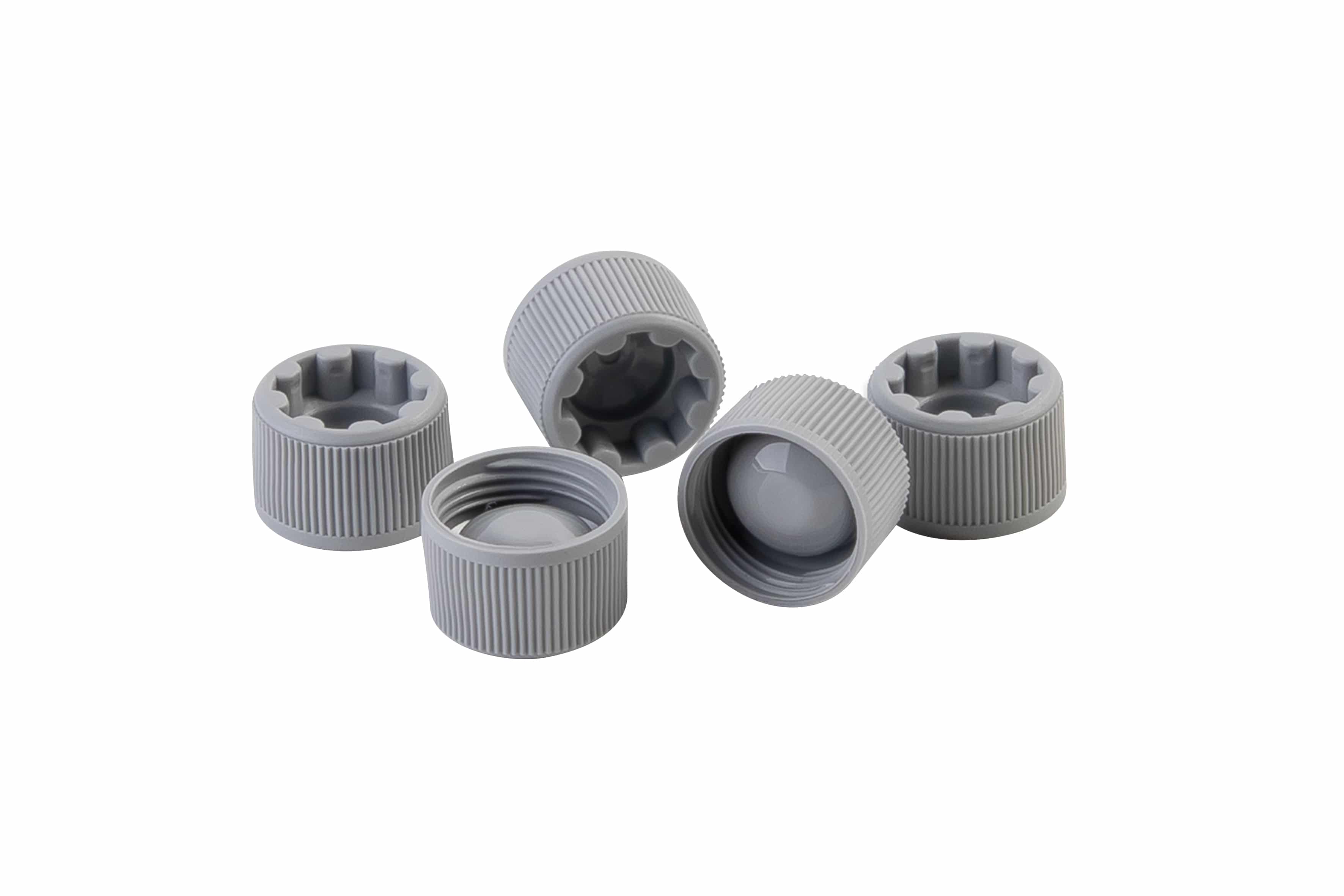


The Micronic TPE Push Caps for tubes in 96-well format are compatible with both internally threaded and externally threaded tubes from Micronic. They come in various formats: the Capcluster-96 which leaves each tube individually capped; the Capmat-96 where 96 caps are held together in a fixed foil for simultaneous sealing; and the Capband-8, a mat format with tear off lines to obtain cap strips. The full TPE cap range is available in Natural and 12 vibrant colors.
The Micronic Screw Caps for tubes with external thread feature a triple-start thread ensuring superior sealing for long-term sample preservation, even at ultra-low temperatures. To prevent over-tightening, whether manually or mechanically, the screw cap includes a unique locking mechanism that protects against cap or tube exhaustion. For ease of use during tube capping, the cap also features an outer grip design. The Screw Caps for tubes with internal thread feature a high-quality silicon O-ring at the base, providing the tightest possible seal. Both the internal and external thread screw caps are available in 12 different colors, providing a broad range of colored screw caps.
Micronic also offers various special versions of screw caps, including Screw Caps Ultra, Low Profile Screw Caps and screw caps in a disposable cap carrier. Screw Caps Ultra are designed for long-term sample storage and provide enhanced sealing performance with a silicone O-ring inside the tube, creating a secure “hard” stop for the tightest seal possible. Low Profile Screw Caps are more compact than standard caps, saving up to 33% more space in a freezer. The disposable cap carrier enables lab technicians to quickly and efficiently cap racks of tubes using automated systems, with caps preloaded into the carrier for added convenience.
Micronic caps are designed to uphold the same high quality as the tubes, ensuring an optimal seal under all conditions. Push caps are suitable for use at temperatures as low as -80°C, offering an economical solution for sample storage, while screw caps can withstand temperatures down to vapor phase LN2. All screw caps are engineered to be automation friendly, maximizing efficiency and optimizing laboratory workflows.